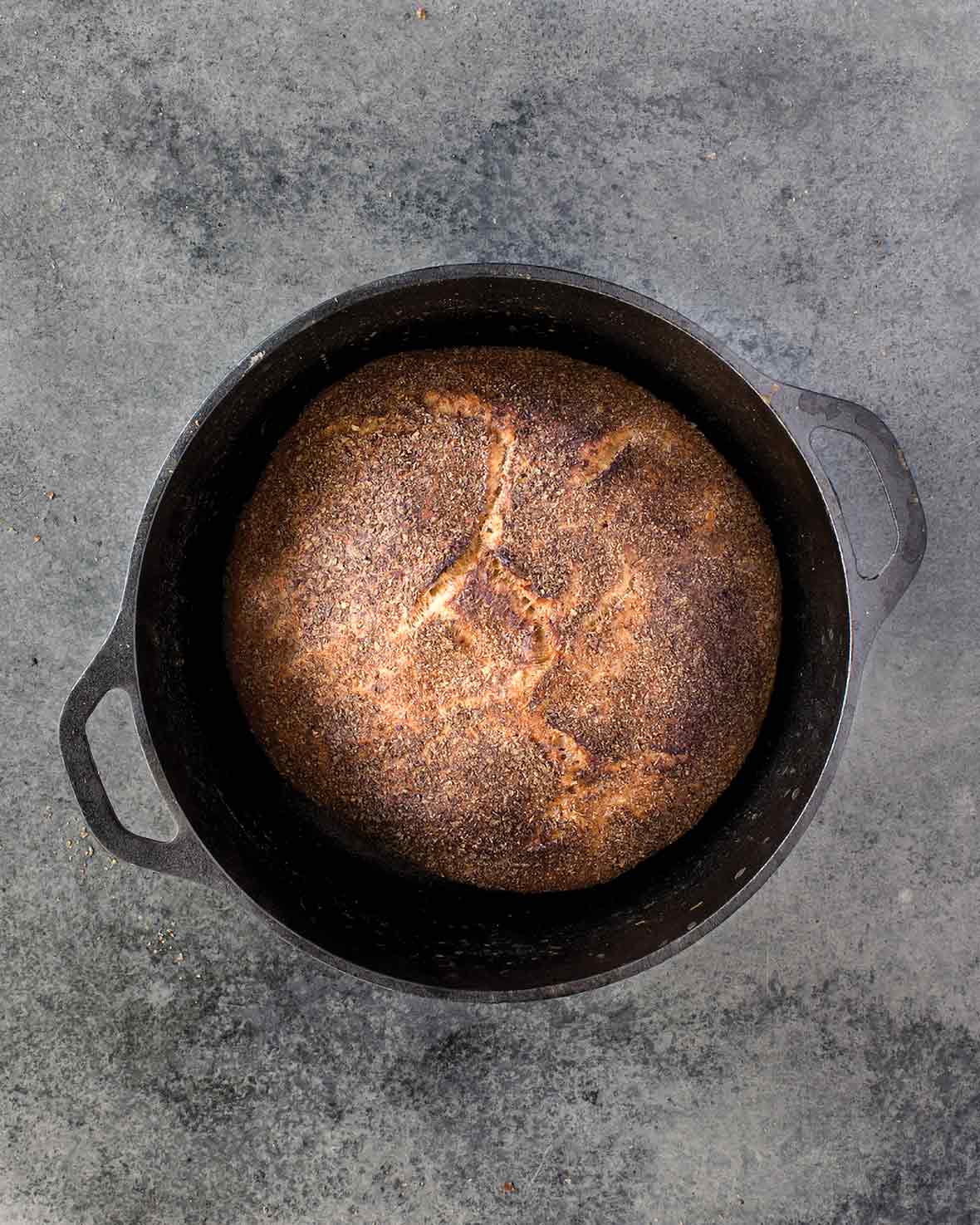
Jim Lahey’s no-knead whole-wheat bread is a brilliant innovation that brings you healthfulness with ease. And that’s to say nothing of the nutty, not overly healthful taste. More of that, please.–Renee Schettler Rossi
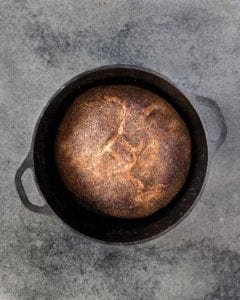
Jim Lahey’s No-Knead Whole-Wheat Bread
Ingredients
- 2 1/4 cups bread flour, plus more for the work surface
- 3/4 cup whole-wheat flour
- 1 1/4 teaspoons table salt
- 1/2 teaspoon instant or other active dry yeast
- 1 1/3 cups cool (55 to 65°F | 13° to 18°C) water
- Wheat bran, cornmeal, or additional flour, for dusting
Instructions
- In a medium bowl, stir together the flours, salt, and yeast. Add the water and, using a wooden spoon or your hand, mix until you have a wet, sticky dough, about 30 seconds.
- Cover the bowl and let it sit at room temperature until the surface is dotted with bubbles and the dough has more than doubled in size, 12 to 18 hours.
- Generously dust a work surface with flour. Use a bowl scraper or rubber spatula to scrape the dough onto the surface in 1 piece. Using lightly floured hands or a bowl scraper or spatula, lift the edges of the dough in toward the center. Nudge and tuck in the edges of the dough to make it round.
- Place a clean towel on your work surface and generously dust it with wheat bran, cornmeal, or flour. Gently place the dough on the towel, seam side down. If the dough feels tacky or sticky, dust the top lightly with wheat bran, cornmeal, or flour.
- Fold the ends of the tea towel loosely over the dough to cover it and place it in a warm, draft-free spot to rise for 1 to 2 hours. The dough is ready when it is almost double in size. When you gently poke the dough with your finger, it should hold the impression. If it springs back, let it rise for another 15 minutes.
- About half an hour before you think the second rise is complete, preheat the oven to 475°F (245°C). Adjust the oven rack to the lower third position and place a 4 1/2-to-5 1/2-quart heavy Dutch oven or pot with a lid in the center of the rack.
- Using pot holders, carefully remove the preheated pot from the oven and uncover it. Unfold the tea towel and quickly but gently invert the dough into the pot, seam side up. (Use caution—the pot will be very hot.) Cover the pot and bake for 30 minutes.
- Remove the lid and continue baking until the loaf is a deep chestnut color but not burnt, 15 to 30 minutes more. The bread is done when it registers 200°F to 210°F (93°C to 99°C) on an instant-read thermometer.
- Use a heatproof spatula or pot holders to carefully lift the bread out of the pot and place it on a rack to cool thoroughly.
- Slice and…sigh.
Notes
Jim Lahey’s No-Knead Whole-Wheat Bread Variation
Seeded Whole-Wheat Bread You can make this sturdy whole-grain loaf even more substantial–and satisfying–when you consider pretending you’re German and tossing in a handful of walnuts or maybe some pumpkin and sunflower sesame seeds when mixing the dough. Consider it bread that sprecheksn the Deutch. Slightly More (Or Less) Hearty Whole-Wheat Bread You can easily adapt this whole-wheat bread recipe to turn out loaves that are a little less hearty by tweaking the proportion of all-purpose to whole-wheat flours. The recipe currently offers a 3:1 ratio, but feel free to nudge it slightly up or down, making it closer to 4:1 or even 2:1 (all-purpose : whole-wheat) depending on how pale or dense a loaf you like.Nutrition
Nutrition information is automatically calculated, so should only be used as an approximation.
Recipe Testers’ Reviews
This no-knead whole-wheat bread is so simple to make it has become my go-to bread recipe. (I rarely buy bread.) It has a chewy crust and a well-developed flavor.
When making bread with all whole-wheat flour and/or if adding bran, I’ve found adding about a tablespoon of any kind of sugar or syrup really helps jump-start the yeast; otherwise it must sit for considerably longer than 12 hours to finish the first rise.
My favorite thing about this recipe is that it lends itself very well to experimentation, I’m still trying to figure out what combination and proportion I like best!
This no-knead whole-wheat recipe makes it easy to turn out crusty loaves of chewy whole-wheat bread that will have you turning up your nose at supermarket bread in no time.
It also invites experimentation, begging to be tweaked with more or less whole-wheat flour and the addition of nuts and seeds (flax? sunflower? pumpkin?). Loaves of bread don’t last long in our house, so there are very few days now when we don’t have a bowl of dough rising on the counter.
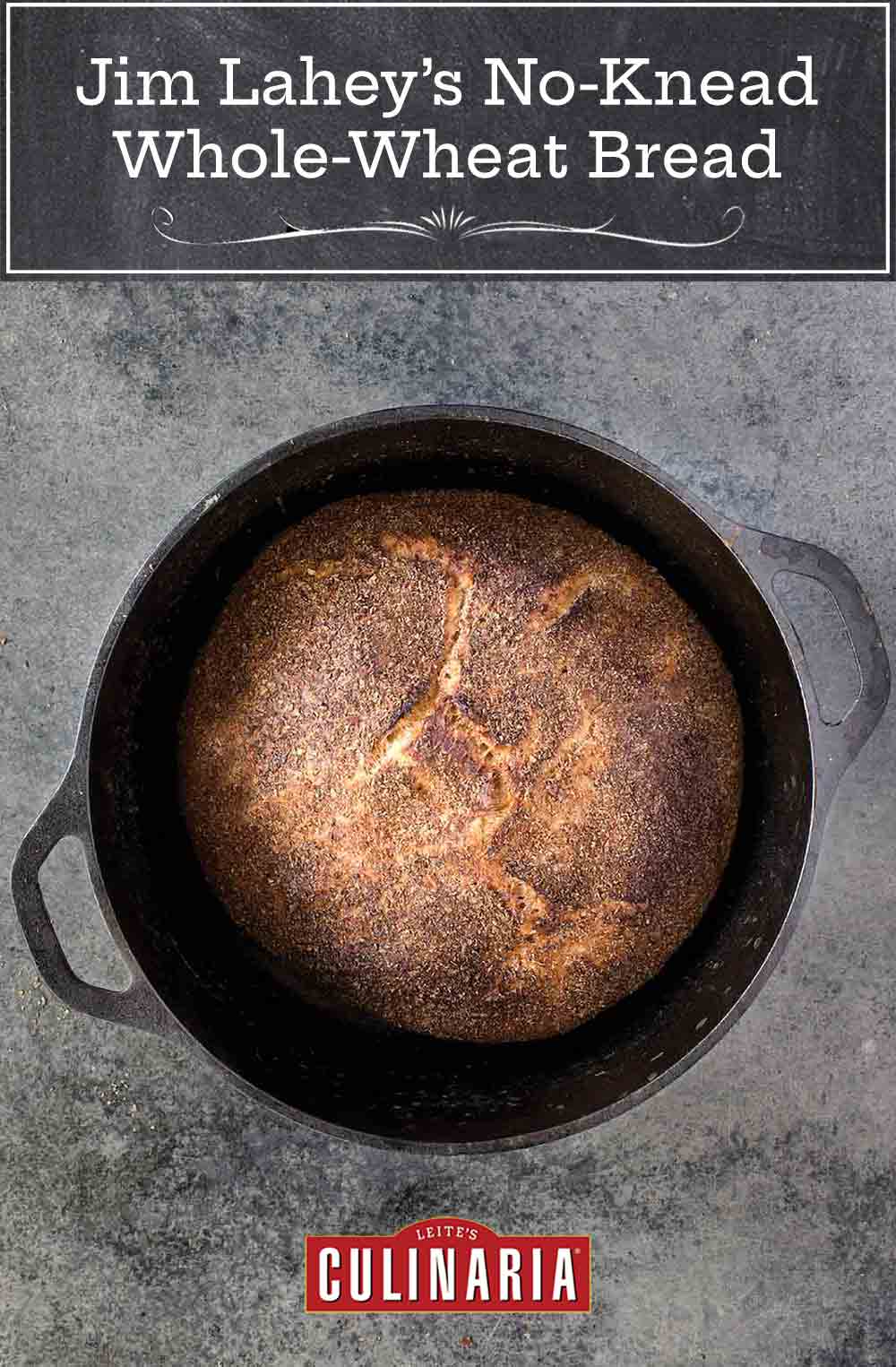


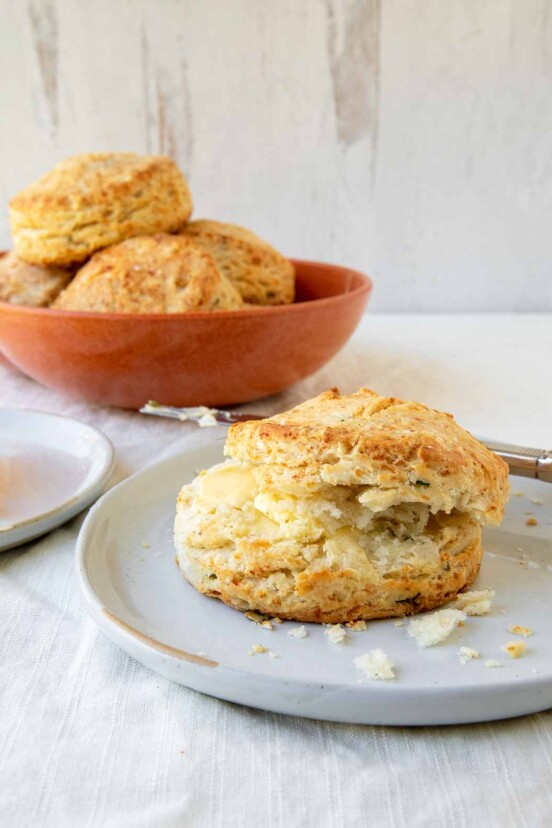
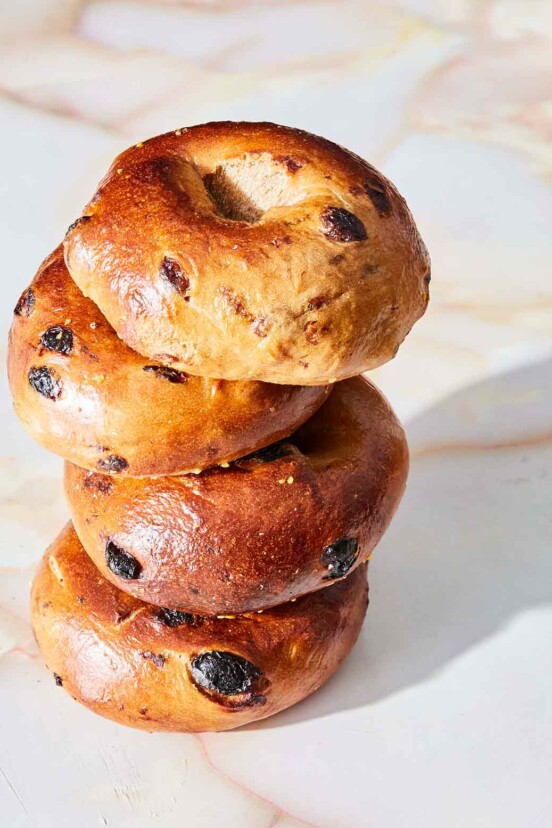









I have no bread flour, only unbleached all purpose flour. I do have KAF’s white whole wheat flour luckily and the Vital wheat gluten product they sell. Can I sub all purpose flour for the bread flour and maybe throw in a tablespoon of the Vital wheat gluten product? Thanks so much! I am so looking forward to making this bread.
Hi Margot, I posed your question to Larry, one of our bread bakers and this is his suggestion. “I weigh 1 cup AP flour. I then add 1 T vital wheat gluten per cup. I always do a bit more than needed and premix. This way, since I weigh my ingredients the weight of the added gluten is accounted for.”
Margot, you should be fine even using AP flour in place of bread flour without adding any more gluten even. I do it all the time and rarely ever buy “bread” flour specifically.
The bread was done in only 35 minutes and came out with a beautiful crust.
After it sat on a cooling rack for 30 minutes, the crust became very soft and lost all of its “crustiness.” Is this expected?
Lisa, that’s due in part because you pull the bread out too early. It needed to bake for a full 45 to 60 minutes.
Thanks! The interior was at 205F so I was worried about it drying out or over-cooking.
Lisa, I’m over the moon that you used to thermometer. So many people don’t! We’re halfway there. It definitely wouldn’t dry out because this is a very, very wet dough. And, in my opinion, you want that nice crisp crust. I always lean on that baking time to get a dark crust; the flavor is so much more complex. But when I making it for my partner, The One, who doesn’t like dark crusts, I bake it similarly to yours. Next love, go longer and see if it works. Keep me posted.
Great recipe! I’ve tried the regular recipe and this one (which seems to be the same with a sub for wheat flour). The dough seemed a bit less soupy this time and easier to work with.
My question–if I wanted to do a 2-3-day rise to get better flavor, would I refrigerate the dough after the on-the-counter overnight rise? Do I punch down the dough and then put in fridge? Or shape the bread and then refrigerate? Or just mix the dough and skip the overnight counter rise and put directly in the fridge?
I know I can get even better flavor with a few more days of fermentation but don’t want to mess up the dough. Thanks for the advice!
IFL, I would stop at step two. Then instead of letting it sit out on the counter for 12 to 18 hours, I’d put it in the refrigerator. But here’s the caveat: you need to make sure that it’s covered with more than just a towel as the skin will dry out. When you’re ready to bake, take the dough out, and continue with the recipe
Thanks for this insight — I have had problems with the skin drying out. What do you recommend to prevent this?
Darca, try covering it with plastic wrap. That should help prevent it from drying out.
I have tried this recipe and loved it. However, I decided I wanted more flavour so I substituted 50g of flour and 50g of water and added 100g of sourdough. It turned out fantastic.
Penny, love the way you’re thinking!